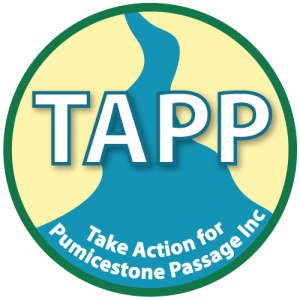Kerry Jones, Kabi Kabi
Michael Strong, Turnstone Archaeology
Kerry Jones is a Kabi Kabi man, born and bred on the Sunshine Coast. He has been an applicant for Kabi Kabi First Nation since it was registered as a Native Title claimant in 2016, and is Director of his family organisation, Bunya Bunya Country Aboriginal Corporation.
Michael Strong is the director and principal archaeologist of Turnstone Archaeology with an M.A. (Archaeology & Heritage) from the University of Leicester, UK. Michael is a full member of the Australian Association of Consulting Archaeologists, a Member of the Australian Archaeological Association, and a member of the British Society of Master Glass Painters. He was awarded the Centenary Medal in 2020 by the Royal Historical Society of Queensland for exemplary and unique leadership in the preservation of history and cultural heritage. He has successfully managed hundreds of heritage projects, large and small, since 1994 and has established a leading reputation in Queensland as a landscape archaeologist and cultural heritage manager. His current research interest is developing an environmental predictive model that has major advantages in understanding traditional clan boundaries, site location and reconstructing lost cultural landscapes for Aboriginal communities, government agencies and environmental planners. Michael works closely with numerous Aboriginal communities throughout Queensland.
Abstract:
Once plentiful along the coast, culturally significant Aboriginal shell middens are disappearing at an alarming rate from erosion, trampling, visitation and infrastructure development. Middens are time capsules providing information about climate change, coastal morphology and transformation, Aboriginal environments and land use, food sources and other marine resources.
To date, there has been no recent comprehensive midden mapping undertaken for the Kabi People. This important project conducted by Kabi Kabi First Nation Applicant, Kerry Jones, and auspiced by Bunya Bunya Country Aboriginal Corporation, followed an Indigenous community-based strategy of location, identification and documenting middens on Bribie Island and along Pumicestone Passage. The project was highly successful with 22 previously undocumented middens identified. Several stone arrangements, included a fish trap, were also identified and perhaps the first evidence of Aboriginal oyster breeding.
The most obvious result from the Kabi Shell Midden Project is the urgent need for further identification and protection of the shell middens at risk in the Pumicestone Passage. Climate change leading to higher sea levels and human interference pose the greatest threats. It is tragic that many middens have already lost the greater percentage of their area to the sea. More than half of the 63 recorded middens have been damaged by erosion from king tides and higher sea levels and probably more frequent storm surges. We face the loss of the majority of our coastal middens unless urgent action is taken.
